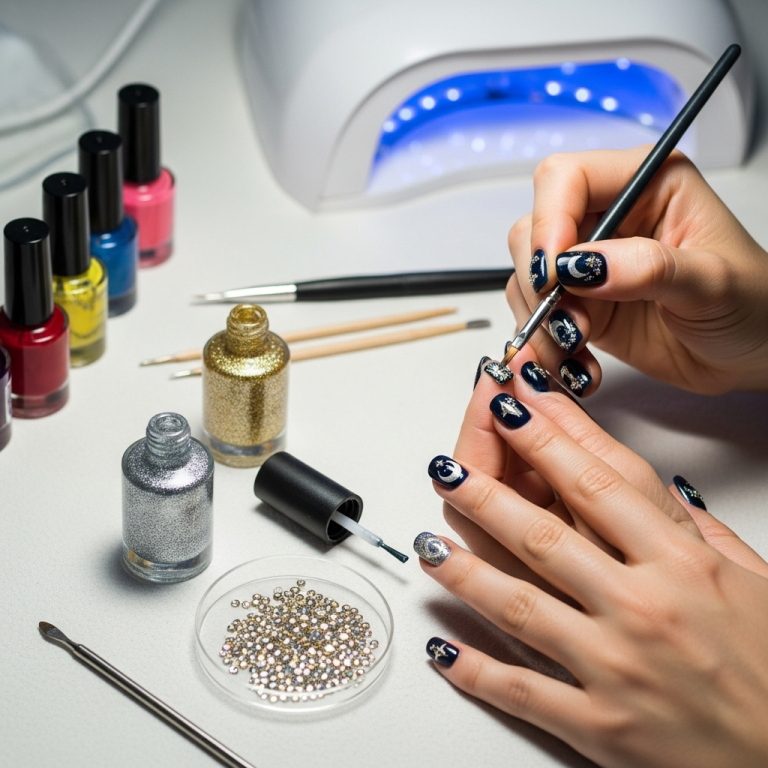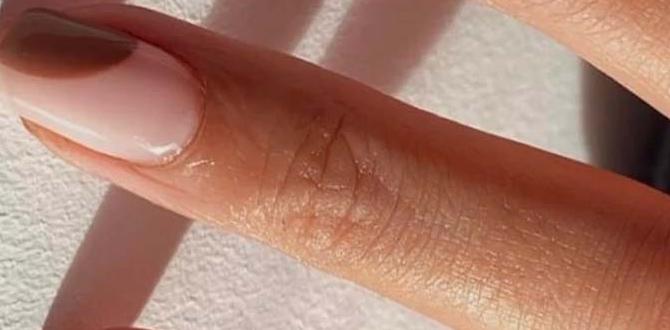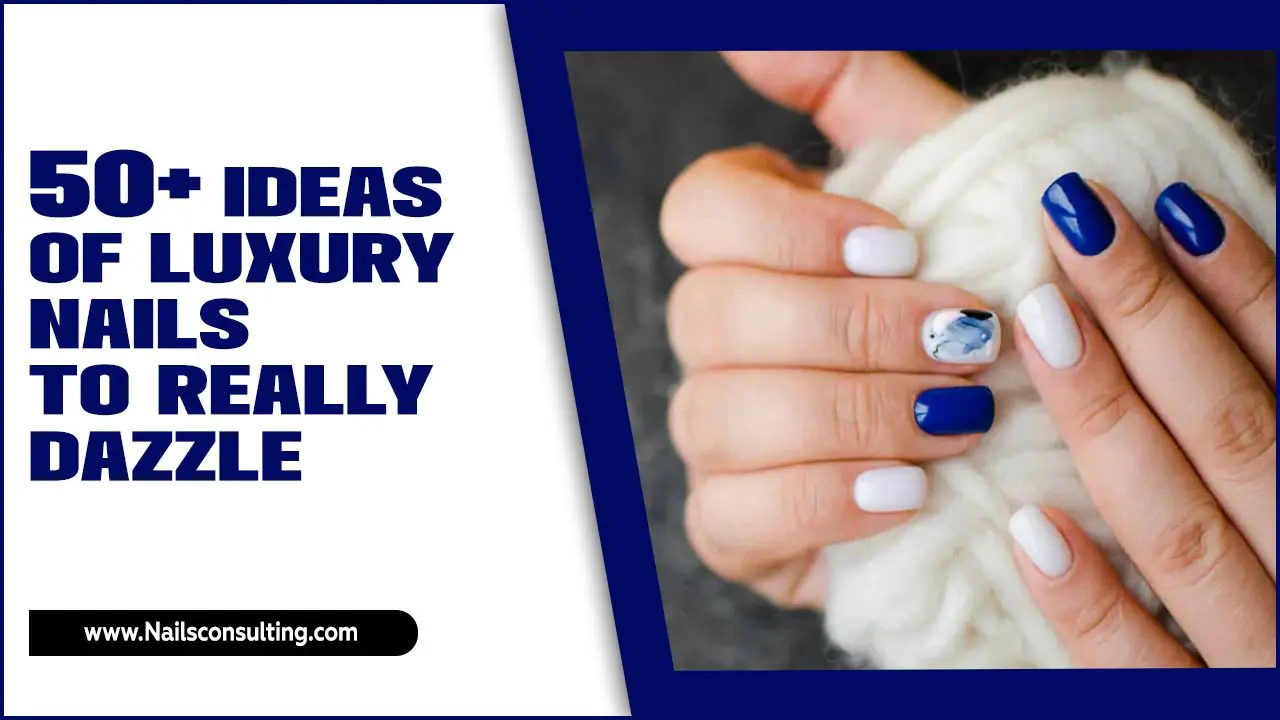Get gorgeous, long-lasting nail designs with these simple tips: prep your nails perfectly, choose quality products, apply coats carefully, and protect your fabulous art from daily wear and tear.
Hello, nail lovers! Ever spend precious time creating the most stunning nail design, only to see it chip or fade within a day or two? It’s such a bummer, right? You’re not alone! Many of us dream of manicures that stay flawless, looking just as fresh as when we first did them. The good news is, achieving beautiful, chip-resistant nail art is totally doable with the right techniques. Forget constant touch-ups; we’re diving into proven tips to make your creative nail designs last longer. Get ready to rock your gorgeous nails with confidence!
The Secret to Staying Power: Nail Prep is Key
Think of nail prep as the foundation of a fabulous house. Without a solid base, nothing will stand strong. The same goes for your nail designs! Taking a little extra time before you even pick up a polish brush makes a world of difference.
1. Clean Slate: Remove All Traces of Old Polish
This might seem obvious, but it’s crucial! Even a tiny bit of old polish can prevent your new design from adhering properly. Use a good quality, acetone-free nail polish remover to avoid drying out your nails. Gently wipe away all traces of color.
2. Shape Up: File for Durability
The way you file your nails can impact how long your polish lasts.
Filing Tips:
- Always file in one direction. Sawing back and forth can create micro-tears that make nails prone to breaking and polish chipping.
- Use a fine-grit nail file (around 180-240 grit) for shaping natural nails.
- Consider the shape: Squoval, round, or soft almond shapes often hold polish better than sharp, pointed styles, which can snag.
3. Cuticle Care: Push, Don’t Cut (for Beginners!)
Healthy cuticles mean healthy-looking nails. Gently push back your cuticles with an orangewood stick or a cuticle pusher after a warm soak (a warm towel works too!). This creates a clean canvas and prevents polish from “lifting” off the nail plate. Avoid cutting your cuticles, as this can lead to infection and uneven growth.
4. Buff Gently: Create a Smooth Surface
A light buff with a 220-240 grit buffer can smooth out any ridges and give your polish something to grip onto. Don’t over-buff, though, as this can thin your nail plate. The goal is a smooth, slightly matte surface.
5. Dehydrate Your Nails: Goodbye, Oils!
Nail oils and moisture are your designs’ enemies! Before applying any polish, wipe your nails with isopropyl alcohol (rubbing alcohol) or a dedicated nail dehydrator. This removes any natural oils or residue, ensuring maximum adhesion. You can find great nail dehydrators at most beauty supply stores.
Product Power: Choosing the Right Ingredients for Longevity
Your nail polish and design products are the stars of the show, but their quality matters immensely for how long they’ll stay in place.
1. Base Coat Brilliance
A good base coat is non-negotiable. It serves multiple purposes:
- Adhesion: It creates a sticky surface for your polish to cling to.
- Protection: It prevents staining from dark or vibrant polishes.
- Smoothness: It fills in minor imperfections for a smoother finish.
Look for a long-wearing base coat formula. Some even offer strengthening benefits!
2. Polish Pick-Up: Quality Over Quantity
While those super cheap polishes might be tempting, investing in reputable brands often means better pigment, smoother application, and longer wear. High-quality polishes have finely milled pigments that apply evenly and are less prone to bubbling or streaking.
3. Top Coat Toughness
This is your design’s shield! A fantastic top coat seals everything in and adds a durable, glossy finish.
- Quick-Dry Top Coats: These are lifesavers for busy bees, but sometimes they can shrink your polish if applied too thick or too soon.
- Gel-Like Top Coats: These offer incredible shine and durability without needing a UV lamp. They’re thick and provide a protective, plump layer.
- Regular Long-Wear Top Coats: Your standard strong top coat is excellent too. The key is a generous, even application.
Always cap your free edge (paint a thin line over the tip of your nail) with your base coat, color, and top coat to prevent chipping.
Application Artistry: Mastering the Polish Process
How you apply your polish is just as important as what you use. These application techniques will amp up your design’s lifespan.
1. Thin, Even Coats are King
It’s tempting to get full coverage with one thick coat, but this is a recipe for disaster. Thick coats take longer to dry, are more prone to dents and smudges, and can even peel off entirely.
- Apply 2-3 thin coats of your colored polish.
- Allow each coat to dry almost completely before applying the next.
This layering process builds a strong, durable color layer that dries thoroughly.
2. Cap That Free Edge!
This is a pro trick that makes a massive difference! After applying your base coat, color coat, and especially your top coat, drag the brush lightly along the very tip (the free edge) of your nail. This seals the polish and prevents moisture from getting underneath, which is a common cause of lifting and chipping.
3. The “Thirds” Method for Smooth Coverage
A great way to ensure even coverage with each coat is the “thirds” method:
- Start with a bead of polish on your brush.
- Apply the brush to the center of your nail, about a third of the way up from the cuticle.
- Gently push the polish back towards the cuticle, then stroke down to the tip.
- Repeat by taking a stroke up one side of the nail and another stroke up the other side, meeting in the middle. This covers the nail in three strokes (hence, “thirds”).
This ensures polish gets close to the cuticle without flooding it and provides even coverage.
4. Slow and Steady with Nail Art Details
When adding intricate details, be patient.
- Allow each layer of your design to dry sufficiently before adding the next. For example, if you’re freehanding stripes, let the base color dry fully, then add your stripes, let them dry, and then apply your top coat.
- For stickers or decals, ensure the base polish is completely dry and smooth before applying.
Rushing this will cause designs to smudge, bleed, or lift.
Beyond Polish: Protecting Your Masterpiece
Once your design is perfected and dried, your job isn’t necessarily over! Protecting your hard work from everyday life is essential for maximizing its lifespan.
1. Top Coat Reapplication: Your Secret Weapon
This is a game-changer! Every 2-3 days, apply a fresh thin layer of your top coat over your existing design. This reinforces the protective layer, adds shine, and can revive a design that’s starting to look a little dull.
2. Glove Up for Chores
Water, harsh soaps, and abrasive cleaners are notorious for damaging manicures and extensions. Whenever you’re washing dishes, cleaning the house, or doing anything that involves prolonged water exposure or chemicals, wear rubber gloves. It’s one of the simplest yet most effective ways to protect your nails.
3. Be Mindful of Your Hands
Think of your nails as part of your design.
- Avoid using your nails as tools – no scraping, prying, or picking! This is a quick way to chip or break polish, and even natural nails.
- Be gentle when opening cans or anything that requires force.
4. Hydrate, Hydrate, Hydrate!
While you want dry nails before applying polish, healthy nails and cuticles overall contribute to longevity.
- Apply cuticle oil daily, especially after washing your hands. This keeps the skin around your nails soft and discourages hangnails, which can interfere with your design.
- Use a good hand lotion regularly.
Well-moisturized nails are less brittle and more flexible, making them less likely to chip.
5. Avoid Super Hot Water
Extremely hot water can soften the nail polish, making it more susceptible to dings and chips. Opt for lukewarm water when washing your hands or showering.
How to Maintain Long-Lasting Nail Design: A Quick Reference
To help you remember the most critical steps, here’s a handy table summarizing key maintenance points for your beautiful nail designs:
| Action | Why It Matters | Frequency |
|---|---|---|
| Apply a thin layer of Top Coat | Renews shine, reinforces protection, seals edges | Every 2-3 days |
| Wear Gloves for Chores | Protects from water, chemicals, and abrasion | Whenever doing chores involving water/cleaners |
| Apply Cuticle Oil & Hand Lotion | Keeps nails and skin healthy/flexible, prevents brittleness | Daily (oil), regularly (lotion) |
| Avoid using nails as tools | Prevents chipping, breaking, and lifting | Always |
| Gentle Hand Washing | Lukewarm water is less likely to soften polish | Always |
| Wait for full drying between steps (design/polish) | Prevents smudging, bleeding, and lifting | During application |
What About Gel Polish vs. Regular Polish for Longevity?
This is a super common question! Both gel and regular polish can last a long time if applied correctly, but they offer different benefits for longevity.
- Regular Polish: With diligent application, preparation, and maintenance (like reapplying top coat), a well-done regular polish manicure can last 5-7 days without significant chipping. It’s more forgiving if you make a mistake and is easy to remove at home.
- Gel Polish: When applied properly by either yourself or a professional and cured under a UV/LED lamp, gel polish typically lasts 2-3 weeks. It’s harder, more resistant to chipping, and has a brilliant shine. However, it requires a specific removal process, often needing soaking or filing, which can be drying if not done carefully. For extended wear and maximum chip resistance, gel is generally the winner.
For beginners looking for easier application and removal, high-quality regular polish with excellent prep and top coat has great staying power. If you’re seeking weeks of flawless wear and don’t mind the extra removal steps, gel polish is fantastic.
Can a Poorly Applied Manicure Be Saved?
Sometimes things don’t go perfectly, and that’s okay! If your polish is still slightly tacky or you notice a small smudge before it’s fully hardened, you can sometimes salvage it.
- Slightly Tacky: If it’s just a bit soft, wait longer! Don’t rush to the top coat. A good way to speed up hardening without disturbing the surface is the “ice bath” method: submerge your nails tip-down in a bowl of ice water for 2-5 minutes. This hardens the polish from the bottom up.
- Small Smudge: If you get a small smudge on a still-wet nail, gently use a clean finger or the brush of your polish bottle to smooth it out as best as possible. You can then carefully apply a thin layer of top coat to seal it. It might not be perfect, but it beats a big chip!
- Major Mess: If it’s a big smudge or a significant dent on fully dried polish, it’s often best to carefully remove that nail’s polish and re-do it, or even remove the whole manicure and start fresh if you have the time.
Patience is key! Letting each layer dry is the best way to avoid these issues in the first place.
Frequently Asked Questions (FAQ)
Here are some common questions beginners have about keeping their nail designs looking great!
Q1: How long should I wait between applying polish coats?
For regular polish, aim to wait until the previous coat is no longer wet to the touch, usually 2-5 minutes. For gel polish, follow the manufacturer’s instructions, as you typically cure each layer immediately.
Q2: Can I use regular polish over nail art stickers?
Absolutely! Make sure the base color is completely dry before applying stickers. Then, seal them with a good quality top coat. Some stickers benefit from a clear polish base beneath them as well.
Q3: Why does my polish chip at the tips so quickly?
This is usually because the free edge wasn’t “capped” with the base coat, color, and top coat. Always paint a thin line over the very edge of your nail to seal it off and prevent lifting!
Q4: Does the brand of polish really matter for how long it lasts?
Yes, the brand and quality of polish can make a difference. Higher-quality formulas tend to have better pigments, smoother application, and more durable polymers, leading to longer wear.
Q5: When should I start reapplying my top coat?
As a general rule, plan to reapply a fresh layer of top coat every 2-3 days. This helps maintain the shine and durability of your manicure.
Q6: Is it bad to soak my nails in water for a long time?
Yes, prolonged soaking in hot water can soften the nail plate and weaken the polish’s bond, making it more prone to chipping and peeling. Try to minimize long soaks or wear gloves for water-based activities.
Conclusion: Your Path to Enduring Nail Art!
There you have it, my friends! Achieving long-lasting nail designs is all about a combination of diligent preparation, smart product choices, careful application techniques, and ongoing protection. By treating your nails and your polish with a little extra care, you can significantly extend the life of your beautiful creations. Remember to prep thoroughly, use quality polishes and top coats, apply in thin layers, and always cap your free edge. And don’t forget those simple protective measures like wearing gloves and reapplying top coat every few days!
Your nails are a canvas for self-expression, and with these tips, you can enjoy your artistic visions for longer. So go forth, get creative, and let your amazing nail designs shine! Happy polishing!



